This year has been a revelation for this hobby of ours. On the industry side, major mergers were announced, countless goals were met in Kickstarter and record breaking attendance was set at each of the major conventions. The business of games is good. The hobby is growing and new fans are joining the tribe every day. From a media perspective, board games are receiving more coverage than ever before. New blogs, vlogs and podcasts pop up every week, but those are largely driven by the fans themselves. Board games have worked their way into mainstream media in way like never before. Now we can point to articles in The Guardian, The New York Times and The Chicago Tribune and say ‘See! That’s what I do,’ when a family member asks you, ‘Board games? Like Monopoly?’
But, if you’re reading this blog you already know all that. You don’t need to be told that board games in 2015 were big business. So let’s talk about the games themselves. Now, any top 10 list is going to leave some people scratching their heads or even unhappy, but that’s what’s great about them! You look at the picks and say ‘What were they thinking?! XYZ game was way better! Why isn’t it on the list?’ That’s why they’re fun! That’s why we read them. A top 10 list only matters as much as you care about the reviewer’s opinion and how closely you equate your own with it. These lists should really be called Jim or Susan’s top 10 favourite games of the year. Board games are works of art and good art creates debate.
Now that I’ve prefaced this list with that little piece of perspective, I give you the Daily Worker Placement’s Top 10 Games of 2015.
10. Dark Moon
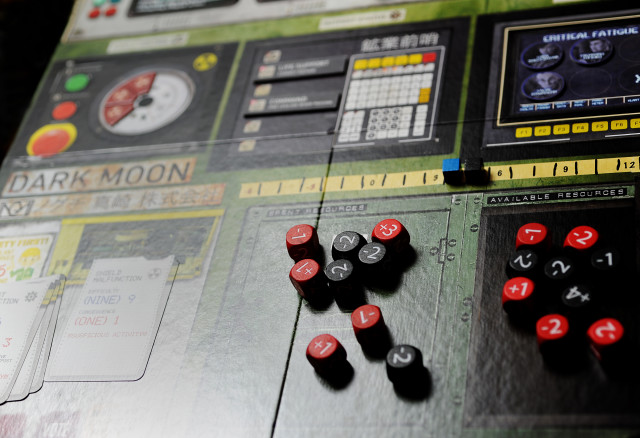 For those who can’t afford to commit 2-3 hours to a round of Battlestar Galactica, but need some paranoia with more substance than what Resistance has to offer, Evan Derrick has prepared a magnificent gift.
For those who can’t afford to commit 2-3 hours to a round of Battlestar Galactica, but need some paranoia with more substance than what Resistance has to offer, Evan Derrick has prepared a magnificent gift.
Players are trapped in a station on Titan, Saturn’s dark moon. A mining accident caused several members of your crew to become infected, but who?! You scramble to keep the ship from falling into disrepair as you question who among your crew are trying to sabotage those very efforts and kill you all.
Your actions on the ship come by way of committing dice rolled behind a player screen. And that is where the intrigue lies. Are you sabotaging the current mission on purpose (infected scum!!!) or are you desperately trying to help, and the dice just hate you. You can say whatever you want to keep yourself from being quarantined; you won’t be of much help (or hindrance) to anyone there. I once nominated Adam for an Academy Award for his performance as ‘Uninfected Human’, which kept him from quarantined, and allowing him to eventually kill us all. Bravo, scum!
9. Voyages of Marco Polo
This might be considered the most standard ‘Euro’ game on the list. Even with that distinction, there’s nothing 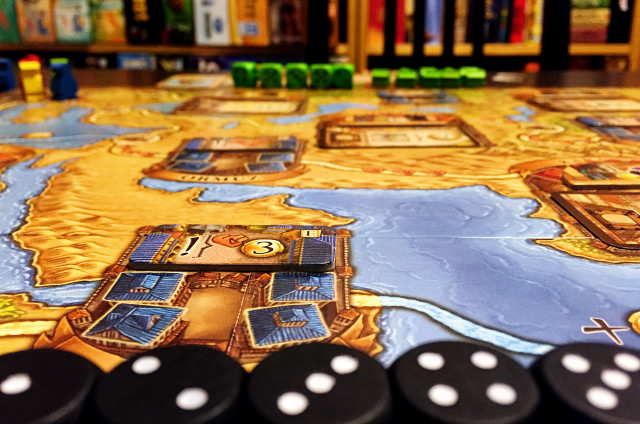 typical about Marco Polo. It is a dice placement game in the same vein as Alien Frontiers, but there is such a cool variety of things you can do with your dice.
typical about Marco Polo. It is a dice placement game in the same vein as Alien Frontiers, but there is such a cool variety of things you can do with your dice.
What I think is interesting about this game is the individual characters players get at the start. Usually when a game gives asymmetrical starting powers to players they are pretty ineffective, but each of the characters in Marco Polo are super powerful. It can massively inform how you’re going to approach the game. They’re balanced, but you’ll have a very different experience depending who you end up with.
Marco Polo is a fun, accessible adventure and definitely worth a shot.
8. Barony
Marc André had a huge hit in 2014 with Splendor, so it was a bit shocking how little fanfare surrounded his followup game this year. Barony appeared and disappeared relatively quickly, but if you got a chance to play it, you experienced a tight battle for control of an expanding kingdom. You have to choose your actions carefully, because you’ll never be able to get everything 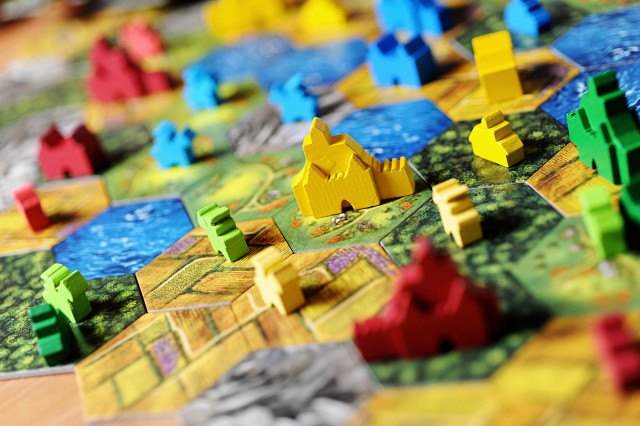 done that you want to.
done that you want to.
Barony is a tug-of-war with assaults coming at you from all sides. The actual actions you can do on a turn are quite simple, but figuring out where your efforts are best directed takes a lot of factors into account.
That’s not even mentioning the amazing art and components. The board is made up of modular tiles that beautifully depict the landscape and the little wooden knights, settlements, strongholds, and cities are incredible. You might not have heard much about Barony yet, but well worth checking out if you get the chance.
7. Cacao
From fantastic Australian designer Phil Walker-Harding, another terrific game (remember how great Sushi Go is?!). Cacao is a light strategy tile-laying/worker placement game – but unlike games like Carcassonne, your workers are on tiles as well. With a 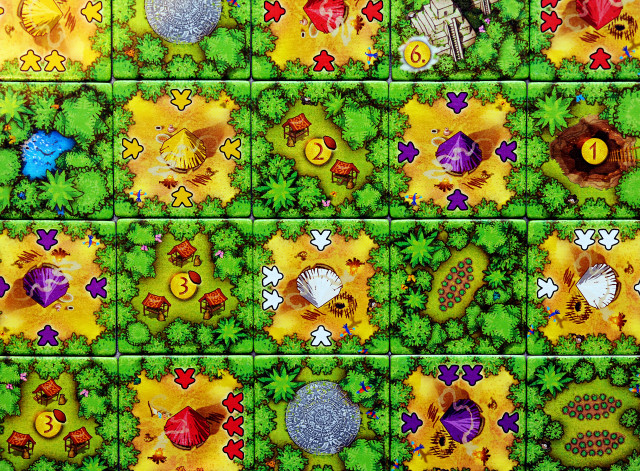 starting grid of jungle tiles, you need to place your workers in an optimum way to gain and sell cacao, gain majorities for temple points, and collect water for the village. Clever placements of your workers can then trigger the benefit of getting to choose from face-up jungle tiles to place as part of the landscape.
starting grid of jungle tiles, you need to place your workers in an optimum way to gain and sell cacao, gain majorities for temple points, and collect water for the village. Clever placements of your workers can then trigger the benefit of getting to choose from face-up jungle tiles to place as part of the landscape.
What is great about this game is how simple it is to teach and learn, but there’s a good amount of strategy in how to optimize your worker and jungle tile placements that this is a perfect game for a mix of gamers. With gorgeous, colourful art and this accessibility, it’s definitely one of the top lighter games of this year, up there with games like last year’s Splendor.
6. The Bloody Inn
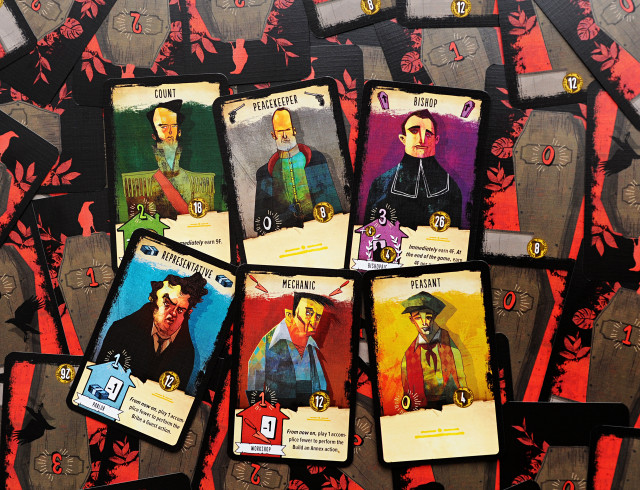 1831 in a small town in France. A family of farmers decides to open an inn. Not because they’re drawn to the hospitality business, but out of a need for money. Their guests will become their prey and if they’re smart about their criminal activity, they might even avoid the authorities and make a tidy profit on the side.
1831 in a small town in France. A family of farmers decides to open an inn. Not because they’re drawn to the hospitality business, but out of a need for money. Their guests will become their prey and if they’re smart about their criminal activity, they might even avoid the authorities and make a tidy profit on the side.
The Bloody Inn is a theme so dark that it shouldn’t work, but it does. It’s mostly card driven as different guests visit your hotel, each with multiple uses.
As guests arrive to the inn each night you’ll have to decide if they would be more useful joining your criminal pursuits or as a corpse in the ground with empty pockets.
5. The Grizzled
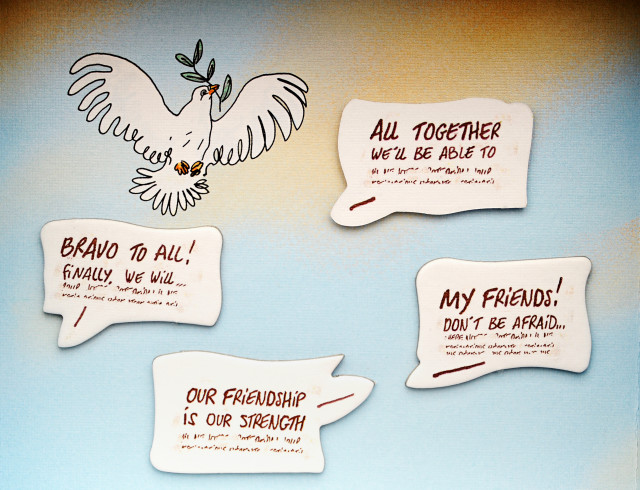 War is Hell, but friendship and trust are sometimes enough to get you through it. The Grizzled is a game set in the trenches of World War I. You and your team will work through a number of different trials and hard knocks and hopefully come out the other side.
War is Hell, but friendship and trust are sometimes enough to get you through it. The Grizzled is a game set in the trenches of World War I. You and your team will work through a number of different trials and hard knocks and hopefully come out the other side.
Despite its theme you never pick up a gun in this game or attack the enemy. The Grizzled focuses your efforts on keeping yourself and your team alive. What can you sacrifice for the good of the group?
This game is tough and beautiful. It’s something you’ll want to come back to over and over again. Just like any good friendship.
4. 7 Wonders Duel
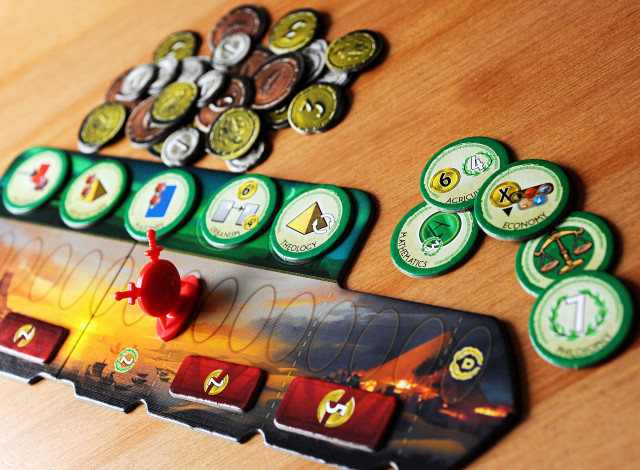 I should preface this by saying that I’m the biggest 7 Wonders fan there is out there. It’s probably the game I’ve logged more hours playing than any other. Now, that very fact might make me the perfect person to review a new iteration of 7W.
I should preface this by saying that I’m the biggest 7 Wonders fan there is out there. It’s probably the game I’ve logged more hours playing than any other. Now, that very fact might make me the perfect person to review a new iteration of 7W.
Duel is a great game by it’s own merits, but if you take into account how Antoine Bauza and Bruno Cathala took a game intended for multiple players and reimagined it as a tight, functional two-player battle it deserves some love.
Duel takes one of my favourite civ-builders and actually improves upon it. I can’t actually believe it’s not higher on my list, but that’s just a testament to what a great year we’ve had!
3. Pandemic Legacy
Holy Moly, this game is intense!
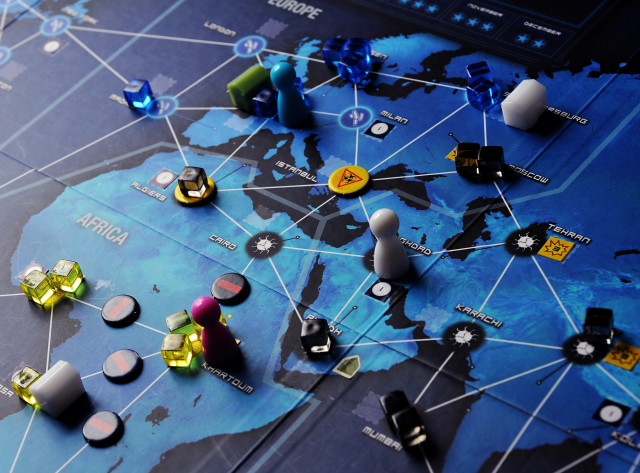 Not every title will work as a Legacy game, but Pandemic is a perfect fit. The battle against spreading disease is ever present and with PL the nightmare isn’t over with one game. The choices you make carry forward and affect the future of the characters you’ve become attached to.
Not every title will work as a Legacy game, but Pandemic is a perfect fit. The battle against spreading disease is ever present and with PL the nightmare isn’t over with one game. The choices you make carry forward and affect the future of the characters you’ve become attached to.
PL immerses you and your team in a cooperative campaign against the spread of infection…and possibly something worse. I haven’t finished the game I’m playing with my friends, but already we’ve had an amazing time trying to overcome everything that gets thrown at us. I can’t wait to see what comes next!
There has been a tiny bit of controversy surrounding it’s meteoric rise in the BGG rankings, but that shouldn’t mar what is an excellent cooperative experience. Grab three friends, set a regular play day and buckle in for a wild adventure!
2. Codenames
Vlaada Chvatil did something pretty amazing with some words written on a couple hundred pieces of paper. Codenames is a 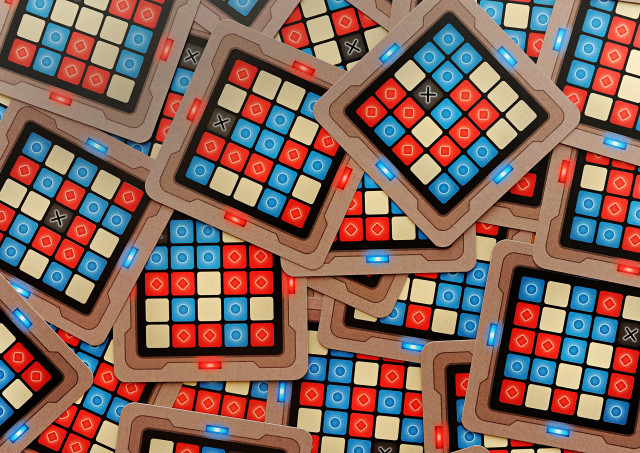 game that should be fun for a couple play throughs, but realistically should not have taken an entire hobby by storm.
game that should be fun for a couple play throughs, but realistically should not have taken an entire hobby by storm.
Its simplicity is its biggest asset. In Codenames you’re trying to communicate as much as you can with a single word. A 5×5 grid of words is the arena and two teams will have to put their ability to paint a picture to the test. How well are you connected with your teammates? What did they mean with the clue they gave you. Or, if you’re on the other end of the spectrum how do you connect Zebra with Las Vegas…there might be a way!
Codenames is a continuation of the trend that I’m calling communication games. Hanabi, Mysterium, The Game, and Concept all fall under the same umbrella. Codenames does it in a totally unique way. When a game does so much with so little in the components department, you know that the real challenge is in the mechanics and the interaction they produce.
1. T.I.M.E. Stories
TS takes everything I thought I knew about games and turns it on its head. I was lucky enough to play it many months before its release and so was spared the hype machine that surrounded it. When I first sat down to try TS, I knew relatively little about it, but from the opening scene I knew I was in for an adventure.
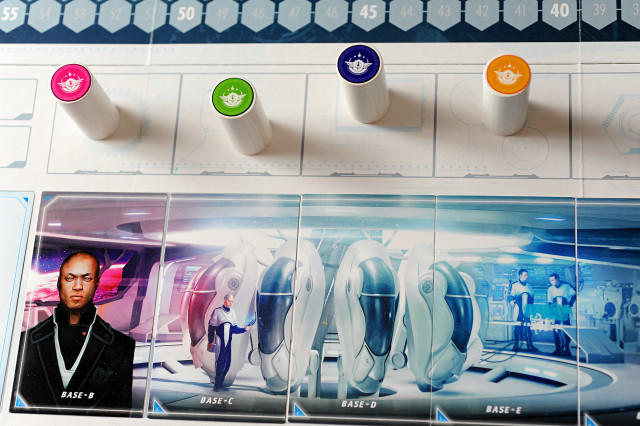
T.I.M.E. Stories
For people that haven’t played it, TS can look like a huge, single-play price tag, but for the people who’ve had a chance to play through a scenario or two and can appreciate the experience and the potential it holds there is a lot less debate. That is not to say that TS is for everyone or that it’s a flawless game, but it does do something that no other game there does. It immerses the team completely in an adventure that is tough, fun, and engaging. The fact that it’s an open system and can be expanded as far as the human imagination for storytelling can stretch makes it’s long-term replayability very appealing.
When I was growing up I loved choose-your-own-adventure books and point-and-click video games. The new fad of escape rooms take a puzzle approach to a situation and adds a time limit. TS has seamlessly merged these activities into a game that foregoes complex rules in favour of theme and experience.
Don’t get me wrong, some people will HATE this game, but try it! Board games are like any other piece of art out there; books, movies, paintings…they should cause discussion and dissent. At the end of the day it’s an experience you will never forget. The team at Space Cowboys tried something new and different with TS and even if it’s divisive, innovation deserves recognition.
A great overview, exquisitely illustrated, and imaginatively written. I love your frequent references to the many levels of artistry in games and their wonderful potential for bringing people together.
Outstanding Sean!